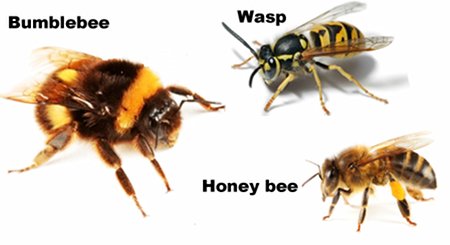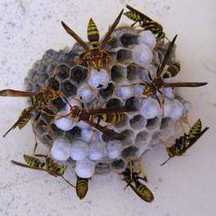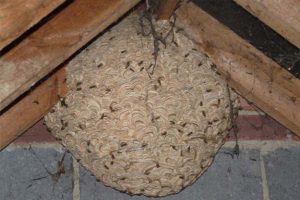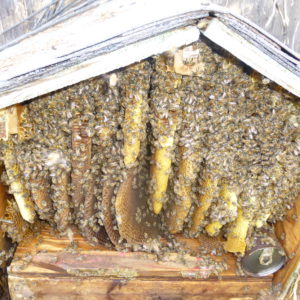Bee Removal Yakima, WA | Yellow Jackets, Wasps, Hornets
Yakima Bee Control & Extermination
 Bro’s Pest Control specializes in bee removal Yakima, WA. Bro’s Pest Control is your connection to safe bee removal and extermination services in the Yakima area. Exterminators within our network specialize in: wasp control, hornet control, bee swarm removal and bee removal. Pest control services can also include sealing off the entrances and exits, repairs from hive and damage, as well as traps. Bee’s can pose danger, especially if a loved one is allergic. Contact Bro’s Pest Control today to control your bee problem in the Yakima area.
Bro’s Pest Control specializes in bee removal Yakima, WA. Bro’s Pest Control is your connection to safe bee removal and extermination services in the Yakima area. Exterminators within our network specialize in: wasp control, hornet control, bee swarm removal and bee removal. Pest control services can also include sealing off the entrances and exits, repairs from hive and damage, as well as traps. Bee’s can pose danger, especially if a loved one is allergic. Contact Bro’s Pest Control today to control your bee problem in the Yakima area.
For Bee Control Yakima, Washington Call, 1-888-497-9069
Specialized Bee Removal & Extermination
Bro’s Pest Control professionals can help you with all different bee problems including:
 Removal of hives, bee swarm removal, yellow jacket removal, hornet removal, bumble bee removal and various of bee removal jobs. Bee removal Yakima, WA experts will come out to your home or business and remove unwanted bee’s safely and at a reasonable price. Same day appointments for bee removal can be scheduled, if needed. Ready for bee control Yakima, WA? Contact us today by calling 1-888-497-9069.
Removal of hives, bee swarm removal, yellow jacket removal, hornet removal, bumble bee removal and various of bee removal jobs. Bee removal Yakima, WA experts will come out to your home or business and remove unwanted bee’s safely and at a reasonable price. Same day appointments for bee removal can be scheduled, if needed. Ready for bee control Yakima, WA? Contact us today by calling 1-888-497-9069.
Bee, Wasp & Hornet Treatment
 Bee, wasp or hornet treatment Yakima, WA will require one of our bee specialists to come out to your home to perform a free inspection. They will arrive fully equipped to eliminate your bee issue. The bee exterminator will identify the location of the nest, depending on the type of stinging insect problem you have, and eliminate/remove the problems to protect your family’s health and safety. In the case of a hornets nest, the technician will treat the nest and return to remove it after insuring that all the pests have been killed.
Bee, wasp or hornet treatment Yakima, WA will require one of our bee specialists to come out to your home to perform a free inspection. They will arrive fully equipped to eliminate your bee issue. The bee exterminator will identify the location of the nest, depending on the type of stinging insect problem you have, and eliminate/remove the problems to protect your family’s health and safety. In the case of a hornets nest, the technician will treat the nest and return to remove it after insuring that all the pests have been killed.
Bees are flying insects closely related to wasps and ants, known for their role in pollination and, in the case of the best-known bee species, the European honey bee, for producing honey and beeswax. For bee removal Yakima, WA — contact us today!
Bee Extermination Yakima, Washington
 Assuming the bee's in question are not honeybee's, a Bro's Pest Control expert can exterminate them. Every year, beekeepers are called upon to give advice regarding the removal of honey bees (and other insect pests) from homes and buildings since honey bees are NOT to be exterminated. Honey Bee removal on the other hand, includes relocating the bee's to a different location. If you have a bumble bee, wasp or yellow jacket bee problem in Yakima, WA -- then extermination can be done. For wasp, bumble bee, hornet or yellow jacket extermination Yakima, WA -- please get in touch with Bro's Pest Control today!
Assuming the bee's in question are not honeybee's, a Bro's Pest Control expert can exterminate them. Every year, beekeepers are called upon to give advice regarding the removal of honey bees (and other insect pests) from homes and buildings since honey bees are NOT to be exterminated. Honey Bee removal on the other hand, includes relocating the bee's to a different location. If you have a bumble bee, wasp or yellow jacket bee problem in Yakima, WA -- then extermination can be done. For wasp, bumble bee, hornet or yellow jacket extermination Yakima, WA -- please get in touch with Bro's Pest Control today!
Yakima, Washington
Yakima (/ˈjækᵻmɑː/ or /ˈjækᵻmə/) is a U.S. city located about 60 miles (100 kilometers) southeast of Mount Rainier in Washington. Yakima is the county seat of Yakima County, Washington, and the state's eleventh largest city by population. As of the 2010 census, the city had a total population of 91,067 and a metropolitan population of 243,231.[5] The unincorporated suburban areas of West Valley and Terrace Heights are considered a part of greater Yakima.[6]
Yakima is situated in the Yakima Valley, an extremely productive agricultural region noted for apple, wine and hop production. As of 2011, the Yakima Valley produces 77% of all hops grown in the United States.[7] The name Yakima originates from the Yakama Nation, located south of the city.
The western honey bee or European honey bee (Apis mellifera) is the most common of the 7–12 species of honey bee worldwide.[1][2] The genus name Apis is Latin for "bee", and mellifera means "honey-bearing", referring to the species' tendency to produce a large quantity of honey for storage over the winter.
Like all honey bees, the western honey bee is eusocial, creating colonies with a single fertile female (or "queen"), many sterile females or "workers," and small proportion of fertile males or "drones." Individual colonies can house tens of thousands of bees. Colony activities are organized by complex communication between individuals, through both odors and the dance language.
